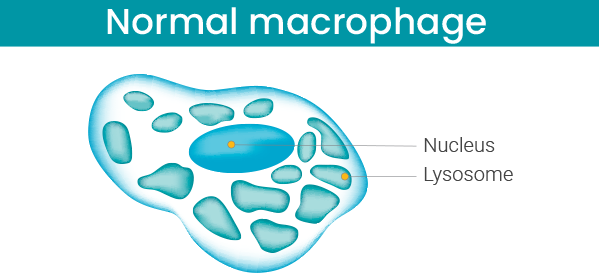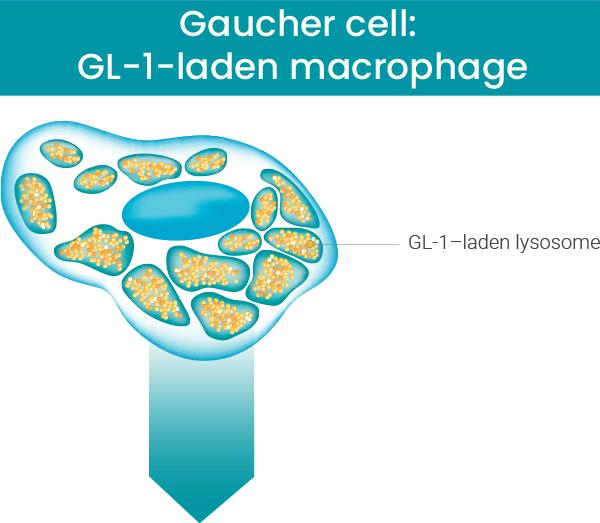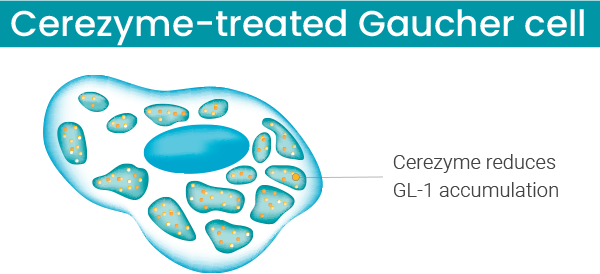Indication
Cerezyme® (imiglucerase) for injection is indicated for treatment of adults and pediatric patients 2 years of age and older with Type 1 Gaucher disease that results in one or more of the following conditions:
- anemia
- thrombocytopenia
- bone disease
- hepatomegaly or splenomegaly
Important Safety Information
Warnings and Precautions:
Hypersensitivity and Infusion-Associated Reactions:
Hypersensitivity reactions, some of which are serious and include anaphylaxis have been reported. Hypersensitivity and other infusion-associated reactions have been reported during or shortly after infusion and include pruritus,
flushing, urticaria, angioedema, chest discomfort, dyspnea, cough, cyanosis, tachycardia, and hypotension. Patients with antibody to imiglucerase have a higher risk of hypersensitivity reactions. Not all patients with symptoms
of hypersensitivity have detectable IgG antibody. Consider periodic monitoring during the first year of treatment for IgG antibody formation.
If a severe hypersensitivity reaction occurs, discontinue Cerezyme treatment and initiate appropriate medical treatment. Consider the risks and benefits of readministering Cerezyme to individual patients following a severe
reaction. If Cerezyme is readministered, consider reducing the rate of infusion, pretreat with antihistamines and/or corticosteroids, and monitor patients for new signs and symptoms of a severe hypersensitivity reaction.
Adverse Reactions:
Adverse reactions reported in adults include back pain, chills, dizziness, fatigue, headache, hypersensitivity reactions, nausea, pyrexia, and vomiting.
Adverse reactions reported in pediatric patients 2 years of age and
older are similar to adults.
Immunogenicity:
Approximately 15% of patients treated and tested to date have developed IgG antibody to Cerezyme during the first year of therapy. Patients who developed IgG antibody did so largely within 6 months of treatment and rarely developed
antibodies to Cerezyme after 12 months of therapy. Approximately 46% of patients with detectable IgG antibodies experienced symptoms of hypersensitivity. Patients with antibody to Cerezyme have higher risk of hypersensitivity
reaction.
Please see Full Prescribing Information (PDF).
To report SUSPECTED ADVERSE REACTIONS, contact Sanofi Medical Information at 1-800-745-4447, Option 2.





